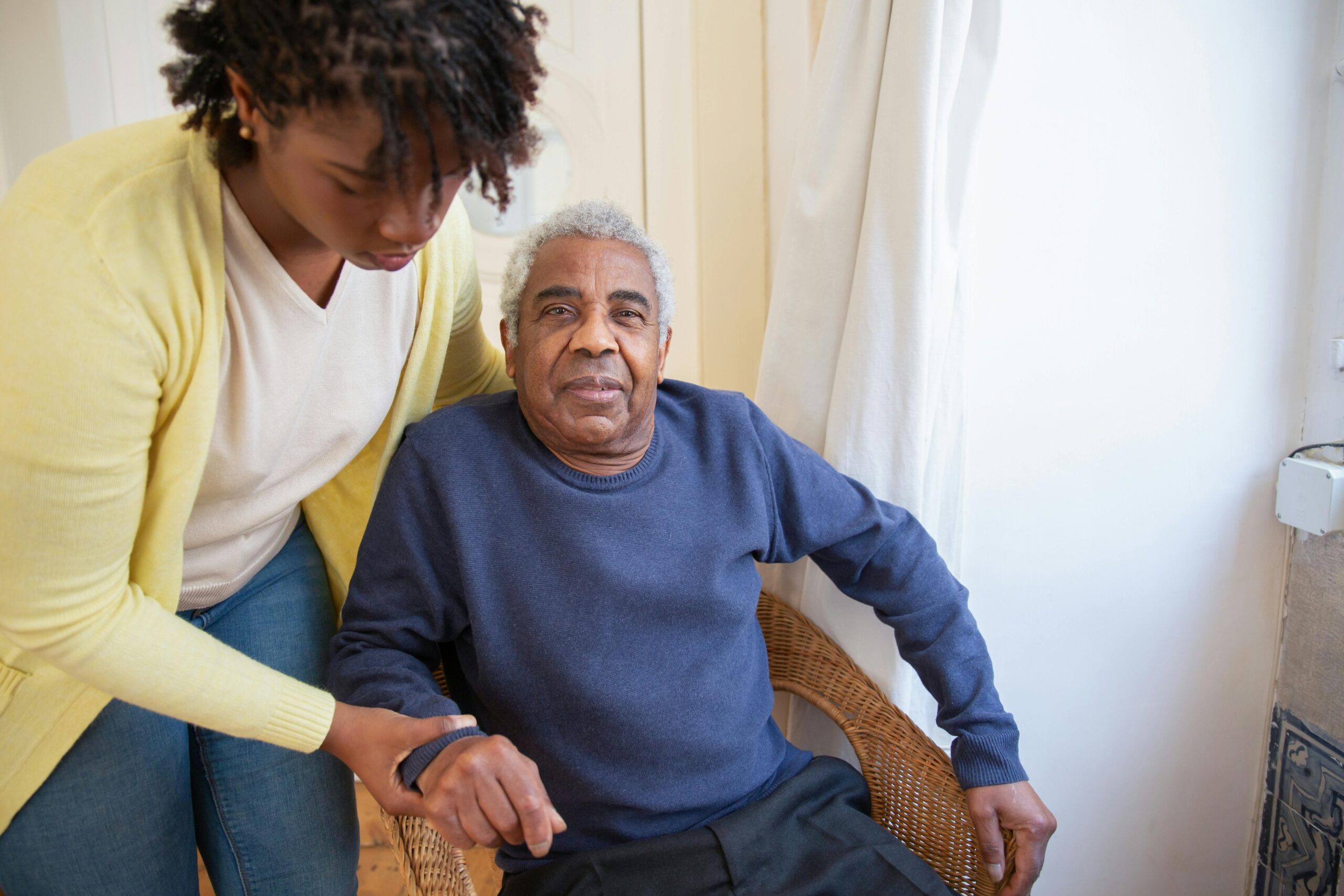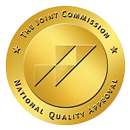
Getting an Intervention Right: Steps to Encourage a Loved One to Seek Help
Medically Reviewed by:

Dr. Marco M. Zahedi
Medical Director, Compassion Recovery Center

Dr. Michael Majeski
Licensed Psychologist (LP), Compassion Recovery Center
Table of Contents
Introduction
Seeing a loved one struggle with addiction is one of the most painful experiences life can bring. You watch someone you care deeply about get caught in a cycle of substance use that harms their health, their relationships, and every aspect of their life. You might feel helpless, scared, angry, or deeply sad. You’ve likely tried talking to them, maybe pleading, maybe even arguing, but nothing seems to change the situation. They might deny there’s a problem, promise to stop but can’t, or become defensive when you bring it up. This is where the idea of an intervention often comes into play. An intervention is essentially a carefully planned process where family members and friends, sometimes with the help of a professional, confront a loved one about their addiction in a loving but firm way. The primary purpose is to help the person see the reality and consequences of their substance use and to motivate them to accept immediate help. It’s not about shaming or blaming; it’s about expressing concern, presenting specific examples of how their addiction has affected everyone, and offering a clear, immediate path to recovery, such as enrolling in a comprehensive treatment program. Getting an intervention right is absolutely critical. An unplanned or poorly executed intervention can sometimes cause more harm than good, leading to increased defensiveness, deeper denial, or even severing relationships. A successful intervention, however, can be a turning point – the moment that breaks through the denial and starts the journey toward healing. It requires careful planning, clear communication, a unified front from participants, and a predefined treatment option ready for immediate acceptance. For families in Orange County and throughout California, finding the right support can be challenging, especially when trying to balance work, family responsibilities, and the emotional toll of dealing with addiction. Compassion Recovery Center understands these challenges. We specialize in providing flexible, accessible remote drug and alcohol rehab through telehealth. Our services, including Virtual IOP Program and other levels of care delivered online, offer a practical solution for individuals ready to seek help, making the transition from intervention to treatment smoother and less disruptive to their lives. We are here to help guide families and individuals through this process, offering expert care and support every step of the way. If you’re considering how to help a loved one, understanding the intervention process is a powerful first step, and knowing that effective, convenient treatment like virtual rehab California is available can provide immense hope.
Understanding Interventions
To successfully plan and execute an intervention, it’s crucial to first understand what an intervention truly is and what it isn’t. At its core, an intervention is a structured, formal meeting initiated by those who care about someone struggling with addiction. Its goal is to gently, yet firmly, confront the individual about their self-destructive behavior and its impact on themselves and others, and to present a clear plan for recovery with specific consequences if they refuse help. It’s a deliberate attempt to break through the denial that so often accompanies addiction. What an intervention is NOT is a spontaneous argument, a blame session, or a lecture. These types of confrontational, unplanned interactions rarely lead to positive outcomes and can damage relationships further. An effective intervention is characterized by love, concern, and unity among the participants, all focused on the singular goal of getting the loved one into treatment immediately. There isn’t just one single type of intervention; approaches can vary based on the individual’s situation, personality, and the type of substance abuse or behavioral addiction involved. Some common models include: – The Johnson Model: This is perhaps the most widely recognized type. It is non-confrontational and surprises the individual. Family and friends gather to read letters expressing their love and concern, specific instances where the addiction caused harm, and a clear request for the individual to accept treatment immediately, outlining consequences if they refuse (e.g., ceasing financial support, not allowing them in the home). This model emphasizes love and support while also clearly defining boundaries. – The ARISE (A Relational Intervention for Substance Exploration) Model: This approach is more collaborative and gradual. It involves inviting the individual to the intervention meetings from the start, working together as a team to explore the problem and solutions. It’s less about surprising the person and more about engaging them in the process from the outset, emphasizing family healing alongside the individual’s recovery. It typically involves multiple meetings. – The Systemic Family Model: This intervention views addiction as a problem affecting the entire family system, not just the individual. It focuses on changing the dynamics within the family that may be contributing to or enabling the addiction. Treatment recommendations often involve family therapy alongside individual care. – Tough Love Interventions: While the term “tough love” is often used casually, in the context of intervention, it emphasizes setting firm boundaries and enforcing consequences if the individual refuses treatment. It’s less about confrontation and more about clearly stating what will happen if they don’t accept help, without anger or judgment, but with unwavering resolve. The role of family and friends in an intervention is paramount. They are the foundation. Participants typically include those who have been significantly impacted by the individual’s addiction – spouses, partners, parents, siblings, adult children, close friends, or even concerned employers. Each participant shares their perspective, expressing their love and concern while providing specific examples of how the individual’s substance abuse has harmed them and the relationship. This shared experience helps the individual see the cumulative impact of their addiction. It is crucial that the intervention team is unified and presents a consistent message. Any wavering or disagreement among participants can be exploited by the individual in denial. This unity extends to the consequences – everyone must be prepared to follow through on the boundaries they set if the individual refuses help. This collective strength and unwavering commitment to the individual’s well-being (even when it means setting painful boundaries) are key to the intervention’s potential success. The emotional weight of seeing everyone they love express their pain and concern can be a powerful catalyst for change. Before attempting any type of intervention, especially complex situations involving severe addiction, mental health issues, or a history of violence, it is highly recommended to consult with a professional interventionist or an addiction specialist. Professionals have the experience and training to guide the process safely and effectively, increasing the likelihood of a positive outcome. Understanding these fundamental aspects – what an intervention is, the different approaches, and the vital role of the intervention team – is the necessary groundwork before moving into the preparation phase. For those seeking help for a loved one, knowing that expert guidance is available through options like Compassion Recovery Center can be a source of comfort.Preparing for an Intervention
Thorough preparation is the most critical phase of an intervention. Without meticulous planning, even the most loving intentions can fall short. Think of it like planning a complex surgery; you wouldn’t just show up and hope for the best. An intervention is an emotional and strategic undertaking that requires significant groundwork to maximize the chances of success and minimize potential harm. This phase involves several key steps that must be undertaken carefully and deliberately. The first step in preparing for an intervention is extensive research and gathering information about addiction. This isn’t just about understanding addiction in a general sense; it’s about understanding the specific challenges related to your loved one’s situation. What substance(s) are they using? What are the typical effects and withdrawal symptoms? What are the common behaviors associated with that addiction? What are the health risks? Understanding the disease of addiction helps family members approach the situation with empathy rather than judgment. Learning about addiction as a complex brain disorder, not a moral failing, shifts the focus from blame to seeking treatment and recovery. Researching also means understanding the treatment landscape – what types of programs are available? What level of care might be appropriate? This foundational knowledge empowers the intervention team. It helps them speak from a place of informed concern, not just emotional reaction. Next, you need to select the right intervention team. This team should consist of people who care deeply about the individual but are also committed to the intervention process and willing to follow through on agreed-upon consequences. Choose people who are emotionally stable, won’t enable the behavior during the intervention, and are unlikely to be emotionally manipulated by the individual. It’s often best to avoid inviting people who are currently struggling with active addiction themselves, or those who might undermine the process out of misplaced sympathy or anger. The team should ideally meet several times before the intervention day to plan, assign roles, and ensure everyone is on the same page regarding the message and the desired outcome. Determining who not to invite is just as important as determining who to invite. Some individuals might be too emotionally volatile, too easily manipulated, or may have a history of conflict with the person in addiction. The goal is a supportive, unified front. Planning the intervention logistics is another crucial step. This includes deciding on the date, time, and place. The location should be neutral, safe, and private – somewhere free from distractions where everyone can focus. The loved one should ideally be relatively sober during the intervention, if possible, as acute intoxication can make meaningful communication impossible. The timing might need to coincide with when a treatment program has an immediate opening. Having the treatment plan ready is paramount – you aren’t just asking them to consider treatment; you are asking them to accept a specific treatment plan that is available now. The logistics also include deciding who will say what, in what order, and rehearsing this flow. Every participant should write a letter or prepare their talking points beforehand. Crucially, the intervention team must agree on the “bottom line” – the consequences that will be implemented immediately and without wavering if the loved one refuses treatment. These consequences are not punishments; they are boundaries set for the well-being of the family members who can no longer support the addiction. Examples might include ceasing financial support, requiring them to move out, limiting contact with children, or no longer covering up for their behavior. Everyone on the team must agree to uphold these boundaries, and they must be realistic and actionable. The individual needs to understand clearly what will happen if they say no to the help being offered. This preparation phase often benefits significantly from the guidance of a professional interventionist. They can help families navigate the complexities of addiction, select the appropriate intervention model, choose the right team members, facilitate the planning meetings, help draft letters, anticipate potential reactions, and even be present during the intervention itself to keep it on track. Professionals also have extensive knowledge of treatment options and can help arrange immediate admission. While it requires an investment, a professional can dramatically increase the likelihood of a positive outcome and provide invaluable support to the often-exhausted family members. For families considering options like virtual rehab in California, preparing means researching providers like Compassion Recovery Center beforehand and having specific information about their Virtual IOP Program, Admissions Information, and ability to conduct an Free Assessment ready to present. The preparation lays the groundwork for a compassionate, structured approach aimed at moving the individual towards recovery.
Steps to Conduct a Successful Intervention
Once the extensive preparation is complete, you are ready to move into the critical phase of conducting the intervention itself. This is the meeting where the planning culminates in a direct, structured conversation with your loved one. Executing this phase effectively requires maintaining composure, sticking to the plan, and staying focused on the ultimate goal: getting the individual to accept help and enter treatment immediately. Step 1: Establish a clear objective. Before the intervention begins, and throughout the meeting, everyone must remember the single, non-negotiable objective: for the loved one to agree to and immediately enter a specific treatment program that has already been arranged. There are no other acceptable outcomes from this meeting. It’s not about getting them to promise to cut back, agree to think about it, or promise to try harder. It’s about immediate acceptance of professional help. This clarity helps the team stay focused and prevents the conversation from being derailed by arguments, excuses, or attempts at manipulation. The treatment plan should be concrete – you should know the name of the facility (like Compassion Recovery Center), the program start date (ideally the same day or the next), and have the admissions process mapped out. Step 2: Choose a professional interventionist if needed. While it’s possible to conduct an intervention with just family and friends, involving a professional interventionist significantly increases the chances of success, especially in complex situations (e.g., severe addiction, co-occurring mental health disorders, history of violence, high potential for denial). A professional brings experience, objectivity, and knowledge of addiction and treatment. They can manage the flow of the meeting, mediate difficult emotions, keep the focus on the objective, and handle resistance or outbursts. They are trained to anticipate reactions and guide the family on how to respond. If you are considering a professional, they should be involved early in the preparation phase, not just called in for the meeting itself. They are invaluable in helping the family navigate the emotional turmoil and practical challenges. If your loved one needs drug rehab Orange County or alcohol rehab Orange County and you are considering remote options, discuss this with the interventionist and the treatment provider beforehand. Step 3: Develop a structured intervention plan. This plan is the script for the meeting. It includes: – The order in which participants will speak. – Who will open and close the meeting (often the interventionist or a strong family leader). – What each person will say (often reading pre-written letters). These letters should include specific examples of the loved one’s behavior while under the influence or due to their addiction and how those behaviors have impacted the speaker. They should express love and concern, not anger or blame. – A clear presentation of the treatment option (e.g., “We have found a program at Compassion Recovery Center, a virtual rehab California provider, that we believe is perfect for you. We’ve spoken with them, and they can begin the Admissions Information process today. They offer Virtual IOP Program and other online therapies that can help you get better without leaving home.”). – A clear statement of the consequences that will be enacted if the loved one refuses treatment. Each person should state their individual boundary if applicable (“If you don’t accept help today, I will no longer be able to…”, “I cannot continue to…”). – Designating who will handle logistics if the individual agrees (e.g., making the first call to the treatment center, helping with online forms for check insurance coverage). Step 4: Practice and rehearse the intervention. This step is often underestimated but is crucial. Team members should practice reading their letters aloud to the group. This helps them manage their emotions, ensure their tone is loving but firm, and become comfortable delivering their message. Rehearsing also allows the team to anticipate potential reactions from the loved one and practice how they will respond calmly and consistently, staying on message. Practicing helps build confidence and unity within the team. It can be emotionally difficult, and rehearsing helps prepare participants for the intensity of the actual meeting. Step 5: Conduct the intervention with compassion and support. On the day of the intervention, the team gathers. The loved one is brought into the setting (often under a pretense, though some models are non-surprise). The designated person opens the meeting, stating the purpose (we are here because we love you and are concerned about your health and safety due to your substance use). Then, each participant takes turns reading their letter or delivering their pre-planned message. It is vital that participants remain calm, compassionate, and supportive throughout. Avoid interruptions, arguing, getting defensive, or getting drawn into side discussions or the loved one’s attempts to deflect or manipulate. After everyone has spoken, the treatment plan is presented clearly. This is followed by the statement of consequences from each person if treatment is refused. The individual is then asked to accept the help now. This moment can be incredibly tense and emotional. The team must remain united and firm in their love and their boundaries. Having the details for accessing help immediately, such as clicking a link to start your free assessment or having the phone number for Compassion Recovery Center ready, reinforces the immediacy of the offer. Remember, the goal is not to force someone into treatment, but to present the reality of their situation and the availability of help so clearly that choosing treatment becomes their only viable path forward. Executing these steps with care and preparation significantly increases the chances that an intervention will be a catalyst for positive change, guiding a loved one from the grip of addiction towards the hope of recovery through immediate access to necessary treatment.Communicating Effectively During an Intervention
Effective communication is the heart of a successful intervention. It’s not just about what is said, but how it is said. The tone must be grounded in love and genuine concern, even when discussing difficult truths and consequences. The goal is to break through denial and motivate change, not to alienate or shame the individual further. This requires careful thought about language and emotional regulation from all participants. A cornerstone of effective communication during an intervention is the use of “I” statements. Instead of saying “You make me feel angry when you lie about your drinking,” which sounds accusatory, rephrase it using an “I” statement: “I feel scared and hurt when I discover you haven’t been truthful about your drinking, because it makes me worry about your safety and the future of our relationship.” This shifts the focus from blaming the other person to expressing your own feelings and the impact of their behavior on you. “I” statements are less likely to trigger defensiveness and can help the individual hear and understand the genuine emotional toll their addiction is taking on their loved ones. Each participant should prepare statements that focus on their own feelings and experiences related to the loved one’s addiction. Equally important is actively avoiding blame and judgment. Addiction is a disease. While individuals are responsible for their choices, approaching the conversation from a place of understanding the complexities of addiction rather than moral judgment is crucial. Phrases like “How could you do this to us?” or “You’re so selfish” are counterproductive. Instead, focus on the behaviors caused by the addiction and the desire to help them recover. The message should be, “We love you, and we are worried about you and the path you are on. We are here because we want to help you get better.” The focus is on the behavior and the disease, not attacking the person’s character. Maintaining a compassionate, non-judgmental tone throughout the intervention, even if the loved one becomes angry or defensive, is vital for keeping the conversation constructive. Offering support and concrete treatment options is the culmination of the communication. After expressing concern and outlining the impact of the addiction, the intervention team transitions to presenting the solution: professional help. This is where you introduce the specific treatment program that has been arranged. This should be done clearly and with conviction. Highlight that there are effective treatments available and that the team is ready to support them in accessing this help immediately. This is the perfect place to introduce the possibility and benefits of telehealth addiction treatment, especially if it’s a good fit for the individual’s circumstances or location, such as needing drug rehab Orange County or alcohol rehab Orange County but preferring to stay home. You can say something like, “We’ve found a highly-regarded program at Compassion Recovery Center that offers treatment remotely. This means you can get the help you need without disrupting your work or family life.” Mention specific services like their Virtual IOP Program, online CBT therapy (Cognitive Behavioral Therapy), or Dual Diagnosis Treatment if they have co-occurring mental health conditions. If Medication-Assisted Treatment (MAT) might be appropriate, mentioning the availability of MAT treatment online as part of a comprehensive program can be important, as it addresses the physical aspects of withdrawal and cravings. Furthermore, involving partners or spouses in the recovery process is often critical for long-term success. If relevant, mentioning services like virtual couples counseling rehab can show that the program supports relationship healing as well as individual recovery. Presenting these options demonstrates that you’ve done your research and found practical, accessible solutions tailored to their needs. The message throughout this phase should be: “We have a solution, we believe in your ability to recover, and we are here to support you in starting this journey today.” Having the specific details ready – phone numbers, website links (Admissions Information, Contact Us), and next steps like filling out an initial assessment or verifying insurance – reinforces the immediacy and seriousness of the offer. Effective communication during an intervention is about presenting a united front of love, concern, and a clear, actionable path towards recovery, ensuring that the individual understands the gravity of the situation while also feeling supported and hopeful about the possibility of a better future.Presenting Treatment Options
One of the most pivotal moments in an intervention is the clear presentation of the treatment option. This isn’t just a suggestion; it’s the concrete solution being offered immediately. The intervention team must have a specific treatment plan ready and fully researched before the intervention begins. Offering vague ideas about “getting help” is insufficient. The individual needs to know exactly what the next step is and that the path has already been cleared for them. This section of the intervention involves explaining what the recommended treatment entails and why it is the right fit. This is where you highlight the chosen facility and program. For many families today, especially those dealing with the complexities of daily life, work, and family responsibilities, remote addiction treatment has become a highly attractive and effective option. This is particularly true in areas like Orange County, California, where commuting can be challenging, and flexibility is highly valued. Discussing the benefits of telehealth addiction treatment can resonate strongly with someone who is hesitant to enter a traditional residential program or even daily in-person outpatient. Emphasize advantages such as: – Convenience and Accessibility: The ability to receive high-quality care from the comfort and privacy of their own home. This eliminates travel time and costs, making it easier to fit treatment into a busy schedule. – Flexibility: Remote programs, like Virtual IOP Program, often offer multiple meeting times throughout the day, allowing individuals to participate in therapy and group sessions while maintaining work, school, or family commitments. – Privacy: Some individuals feel more comfortable discussing sensitive issues from a familiar environment. – Continuity: Staying home means they can remain connected to their local support network (non-using friends, family) while building a recovery community online. – Lower Cost: Telehealth programs can often be more cost-effective than inpatient programs. – Immediate Start: Remote programs can often facilitate a quicker start to treatment compared to waiting for a bed in a residential facility. Highlighting the specific services available through telehealth reinforces the comprehensive nature of the care being offered. For example, mention that Compassion Recovery Center provides not just group therapy but also individual counseling, educational sessions, and support for developing coping skills, all delivered securely online. If appropriate for the individual’s needs, specific types of therapy known to be effective remotely, such as online CBT therapy, should be mentioned. If there are co-occurring mental health issues, emphasize that the chosen provider offers Dual Diagnosis Treatment through telehealth, addressing both addiction and mental health simultaneously. For substance use disorders that benefit from medication, such as opioid or alcohol addiction, make it clear that MAT treatment online is available as part of the program, combining medication with therapy and support. Furthermore, for couples impacted by addiction, mentioning services like virtual couples counseling rehab demonstrates that the program supports healing for the entire family unit, which can be a powerful incentive. Emphasize the convenience and local relevance of options like virtual rehab in California or remote drug rehab Orange County provided by Compassion Recovery Center. This can make the idea of treatment feel less daunting and more accessible for someone living in this specific area. You can say, “We found Compassion Recovery Center, which specializes in helping people right here in Orange County, offering flexible online programs like the Intensive Outpatient Program (IOP) virtually.” Having all the necessary details ready to facilitate immediate admission is crucial. This includes knowing the steps for Admissions Information, understanding how to verify your insurance online (or having already checked coverage), and having the direct contact information for the treatment center’s admissions team (Contact Us). You should be prepared to make the call and start the process right there and then if the individual agrees. The goal is to remove all potential barriers to starting treatment immediately. “We have everything ready. All you need to do is say yes, and we can get you started with your Free Assessment at Compassion Recovery Center today.” Presenting the treatment option is not just about listing services; it’s about presenting a lifeline. It’s about showing the loved one that there is a way out of the cycle of addiction, that help is available, that it is accessible, and that their loved ones are united in supporting them on this journey towards recovery. It is the turning point of the intervention, where the conversation shifts from identifying the problem to offering the solution.Handling Reactions and Resistance
One of the most challenging aspects of an intervention is anticipating and handling the wide range of reactions and potential resistance from the loved one. Addiction changes the brain’s chemistry, and denial is a powerful defense mechanism. It’s highly unlikely that the individual will simply say, “Thank you, I’ll go immediately,” without some form of emotional response or pushback. Being prepared for this is essential for maintaining control of the situation and staying focused on the objective. You should mentally prepare for different responses from the loved one. Common reactions include: – Denial: “I don’t have a problem,” “It’s not that bad,” “I can quit anytime I want.” – Anger/Hostility: Lashing out, yelling, making accusations, threatening to leave. “How dare you ambush me like this?” “You’re the ones with the problem!” – Minimization: Downplaying the severity of their use or its consequences. “Everyone does it,” “It’s just a little stress relief,” “It didn’t impact anyone that much.” – Blame Shifting: Pointing fingers at others or external circumstances. “It’s your fault I drink/use,” “My job/relationship/life is too stressful, I need this to cope.” – Guilt-Tripping/Playing the Victim: Trying to evoke sympathy to derail the process. “You don’t know how hard I have it,” “You guys are making me feel terrible.” – Making Promises: Offering to cut back or stop on their own without professional help. “I promise I’ll stop tomorrow,” “I’ll just do it by myself.” – Leaving: Attempting to end the meeting by walking out. Strategies to manage denial or anger require the intervention team to remain calm, united, and focused. This is where rehearsal and a professional interventionist’s guidance are invaluable. – Stay Calm and Composed: Do not mirror their anger or get defensive. Speak softly but firmly. Your calm demeanor can help de-escalate the situation. If you feel your emotions rising, take a deep breath and remember the purpose of the meeting. – Stick to the Plan: Do not get drawn into arguments about specific incidents, past grievances, or tangential issues. Gently but firmly redirect the conversation back to the purpose: expressing concern about their addiction and the need for treatment. Use phrases like, “We can talk about that later, but right now, we are here because we love you and are concerned about your substance use.” – Reiterate Love and Concern: Keep reminding them that this intervention comes from a place of deep caring, not anger or punishment. “We are doing this because we love you and want to see you healthy and happy.” – Reiterate the Impact (Briefly): If they deny or minimize, you can briefly and calmly refer back to the specific examples shared in the letters, without arguing. “We shared specific instances of how your actions while using have hurt us, and those are real impacts we’ve experienced.” – Do Not Argue, Enable, or Waive Consequences: This is critical. Do not get into a debate about whether they have a problem. Do not accept promises to quit on their own. Do not back down on the stated consequences if they refuse treatment. If they threaten to leave, calmly state that while you love them, if they leave and don’t accept help, the consequences will be enacted. If they walk out, the intervention, as planned, is over, and the team must be prepared to immediately implement the boundaries they set. This is often the hardest part, but inconsistency undermines the entire effort. – Keep the Focus on the Solution: Continuously bring the conversation back to the treatment option. “We understand this is hard to hear, but there is help available. This program at Compassion Recovery Center is ready to help you start today.” Remind them of the benefits, especially the accessibility of virtual rehab in California. – Lean on the Professional (If Present): An interventionist is skilled at managing these difficult dynamics. They can step in to mediate, redirect, or provide a calm, objective presence when emotions are high. – Reinforce the Importance of Seeking Help NOW: Addiction is progressive and potentially fatal. The intervention presents a window of opportunity that might not come again. Emphasize that the time to act is immediately. Handling resistance requires patience, resilience, and unwavering resolve from the intervention team. It is emotionally taxing, but staying united, compassionate, and firm on the need for immediate treatment is the most effective way to navigate these challenging reactions and guide your loved one towards accepting the help they desperately need. Remember, their resistance is often the voice of the addiction, not their true self.Post-Intervention Steps
The intervention meeting itself is a crucial event, but the process doesn’t end when the meeting concludes. What happens immediately after, and in the days and weeks that follow, is just as important for setting the stage for recovery, whether the intervention was “successful” (the loved one agreed to treatment) or not. If the Loved One Agrees to Treatment: This is the desired outcome, and it requires immediate action. Congratulations to the team on reaching this point, but the work is just beginning. The intervention plan should have included clear post-intervention steps: – Immediate Logistics: If the treatment is residential, transport needs to be arranged immediately. If it’s remote, like the Virtual IOP Program offered by Compassion Recovery Center, the process of getting them enrolled must start right away. This means making the call to the treatment center’s Admissions Information line, completing any necessary paperwork, facilitating a Free Assessment, and helping them get set up with the necessary technology for telehealth addiction treatment. The team member assigned to this should take the lead. The window of willingness is often short, so speed is essential. – Support During Admission: Be present and supportive as they navigate the admission process, whether it’s packing a bag for residential care or sitting with them while they register online for virtual rehab in California. – Family Involvement: Many treatment programs, including remote ones, offer family components. The intervention team should commit to participating in family therapy or educational programs offered by the treatment center, such as those potentially integrated into virtual couples counseling rehab or family programs. Recovery is a family journey. – Ongoing Support (without Enabling): Continue to offer love and encouragement throughout their treatment and into early recovery. Learn about addiction and recovery. Attend support groups like Al-Anon or Nar-Anon for yourself. Understand that recovery is a process with potential challenges and setbacks. Provide emotional support, but be mindful not to fall back into enabling behaviors. Maintain healthy boundaries even while being supportive. Celebrate milestones. What to Do if the Intervention is Unsuccessful: This is a difficult outcome, but it is important to remember that an unsuccessful intervention is not a failure of love, but rather a sign that the individual is not yet ready to accept help. The intervention may have still planted seeds that could sprout later. – Implement Consequences Immediately: This is perhaps the most crucial step if treatment is refused. The intervention team must follow through, calmly and without anger, on the boundaries they clearly stated during the meeting. This might mean the individual has to move out, financial support is withdrawn, or contact is limited. While painful, this is essential to reinforce that their addiction has consequences and that enabling behaviors will no longer continue. Inconsistency here teaches the loved one that the family’s boundaries are not serious. – Prioritize Self-Care for the Intervention Team: The emotional toll of a non-successful intervention can be immense. Family members and friends need support. Continue attending your own support groups (Al-Anon, etc.) or consider individual therapy. You cannot help your loved one if you are burned out or emotionally depleted. – Do Not Enable: Be hyper-vigilant about not resuming enabling behaviors. This means not lending money, not making excuses for them, not bailing them out of trouble, and not minimizing the problem. Setting boundaries is an act of love, even when it feels difficult. – Leave the Door Open: While maintaining boundaries, let your loved one know that the offer of help remains open whenever they are ready. “Our offer to help you get into treatment at Compassion Recovery Center is always there when you are ready to accept it.” – Seek Professional Guidance: Continue to consult with an interventionist or addiction professional after an unsuccessful intervention. They can provide strategies for dealing with the ongoing situation, advice on maintaining boundaries, and support for the family. They can also help assess if and when another intervention attempt might be appropriate in the future using a different approach or team. – Focus on Your Own Health and Well-being: Family members are often deeply affected by a loved one’s addiction. Use this time to focus on your own physical and mental health. Engage in activities that bring you joy, connect with supportive friends, and practice self-compassion. Regardless of the immediate outcome, continuous support and encouragement remain vital, albeit potentially from a distance if boundaries require it. For the individual who agreed to treatment, ongoing support helps reinforce their commitment to recovery. For the individual who refused, maintaining boundaries is a form of tough love that might eventually lead them to reconsider. The journey of recovery is long and requires ongoing effort not just from the individual in treatment, but from their entire support system. Knowing that resources like Compassion Recovery Center are available, offering flexible and accessible telehealth addiction treatment options, means that when your loved one is ready, help is within reach, no matter where they are in California. Taking action, whether through intervention or setting boundaries, is a powerful step towards healing for everyone involved.Conclusion
Navigating the complexities of addiction within a family is one of life’s most daunting challenges. Watching someone you love struggle, lose control, and cause pain to themselves and others is heartbreaking. While it’s natural to want to fix the problem for them, addiction is a disease that requires professional help, and the individual must ultimately choose recovery. However, families are not powerless. A well-planned and compassionate intervention can be a critical turning point, a structured opportunity to break through denial and present a clear path to healing. Recapping the importance of a well-planned intervention, we’ve seen that success hinges on thorough preparation: researching addiction, assembling a unified and committed team, carefully planning the logistics, and, ideally, seeking guidance from a professional interventionist. The execution requires calm, compassionate communication using “I” statements, avoiding blame, and clearly presenting a concrete, immediately available treatment option. Anticipating and navigating resistance with calm resolve and a united front is vital. Finally, the steps taken after the intervention, whether supporting a loved one entering treatment or implementing consequences while maintaining boundaries, are crucial for setting the stage for long-term recovery and family healing. An intervention is not a magic fix, and it may not always result in immediate treatment acceptance. However, it is a powerful demonstration of love and concern, delivered with the necessary firmness to confront the reality of the addiction. It removes the ability for the individual to continue denying the impact of their behavior and clearly lays out the consequences of refusing help, often creating the necessary crisis that motivates change. We encourage anyone grappling with how to help a loved one with substance abuse or mental health issues to seek professional help. This might mean consulting with an interventionist to plan the meeting, or reaching out directly to a treatment provider to understand the available options. Compassion Recovery Center specializes in providing accessible, high-quality care through telehealth, making it easier for individuals in Orange County and throughout California to access treatment without disrupting their lives. Our Virtual IOP Program, Intensive Outpatient Program (IOP), and other levels of care delivered remotely offer effective, evidence-based therapies like online CBT therapy, support for Dual Diagnosis Treatment, MAT treatment online, and even virtual couples counseling rehab. This virtual rehab California model offers flexibility, privacy, and the ability to heal while staying connected to one’s support system. We understand the unique needs of individuals and families seeking remote drug rehab Orange County and are dedicated to providing compassionate, effective care. Supporting a loved one through recovery is a journey that requires patience, resilience, and ongoing effort. Whether the intervention leads directly to treatment or requires setting boundaries, remember that you are not alone. Resources are available to help both the individual struggling with addiction and the family members who love them. Taking the step to plan an intervention or explore treatment options is an act of profound love and courage. If you are ready to take that step, we are here to help. Contact Us today to learn more about our programs or to discuss how we can support your family. You can also verify your insurance online or start your free assessment to understand the treatment options available. There is hope, and recovery is possible. Start your recovery journey today with compassion and support.What are the key steps in a brief intervention?
Brief intervention, often used in healthcare settings, typically involves a short, structured conversation focused on raising awareness about the harms of substance use and motivating the individual to change. Key steps often include: raising the topic, providing feedback on risks, enhancing motivation, and developing a plan for change. While different from a full family intervention, it shares the core goal of encouraging the person to consider their substance use and seek help if needed.
How do you convince a loved one to seek help?
Convincing a loved one requires patience, consistency, and a focus on their well-being. Start by educating yourself about addiction. Have calm, non-judgmental conversations expressing your concern and specific examples of how their substance use has affected you and others. Offer specific, concrete treatment options like telehealth addiction treatment from Compassion Recovery Center. Set loving boundaries to avoid enabling, and follow through on consequences if they refuse help. Sometimes, a formal, structured intervention planned with professionals is necessary to break through denial and motivate acceptance of help.
What are the four basic steps of intervention?
While models vary, four basic components often found in interventions are: 1) Planning and Preparation (research, team selection, logistics, setting consequences), 2) Conducting the Intervention (the meeting itself, expressing concern, sharing impacts), 3) Presenting the Treatment Plan (offering a specific, immediately available option like Virtual IOP Program), and 4) Following Through (implementing consequences if treatment is refused, or supporting recovery if accepted).
What are the six elements of brief intervention?
Brief intervention models often include these elements (sometimes referred to as the “FRAMES” model or similar): Feedback (giving direct feedback on risks), Responsibility (emphasizing the individual’s control), Advice (providing clear advice to change), Menu of Options (offering various ways to change or seek help), Empathy (expressing warmth and understanding), and Self-Efficacy (supporting the individual’s belief in their ability to change).
What are good questions to ask about addiction?
When speaking with a loved one or a professional about addiction, ask open-ended questions to encourage dialogue and understanding. Examples include: “What are your thoughts about your substance use?” “How do you feel your substance use is affecting your life or health?” “Have you ever thought about cutting back or quitting?” “What might make it difficult for you to stop?” “What kind of support do you think would be helpful if you decided to make a change?” “Are you open to learning about treatment options like virtual rehab California?”
What are the three main types of interventions for substance use?
Common intervention models include: 1) The Johnson Model (structured, surprise, family-led with potential professional guidance), 2) The ARISE Model (gradual, collaborative, invites the individual to participate from the start), and 3) Systemic Family Models (focus on family dynamics as part of the problem and solution). Each has different approaches but shares the goal of motivating the individual towards treatment.
What is the 10 questionnaire for addiction?
There isn’t one universally recognized “10 questionnaire” for addiction. However, several screening tools use a short set of questions (often around 10 or fewer) to quickly assess potential substance use disorders. Examples include the AUDIT (Alcohol Use Disorders Identification Test) or the DAST-10 (Drug Abuse Screening Test). These are screening tools, not diagnostic, and a formal assessment by a professional is needed for diagnosis and treatment planning. Compassion Recovery Center offers a Free Assessment to help determine appropriate care.
What techniques are used to establish positive action towards recovery?
Techniques to encourage positive action include motivational interviewing (exploring readiness for change), cognitive behavioral therapy (online CBT therapy is available) to change thought patterns, setting small, achievable goals, building a strong support network, developing healthy coping mechanisms, addressing underlying issues like mental health (Dual Diagnosis Treatment), and connecting with professional treatment programs that offer structured support and therapy, such as a Virtual IOP Program. Celebrating progress, no matter how small, is also key.
Struggling to balance life while needing support? Get expert virtual care and start your recovery journey, anytime, anywhere.
We’re learning more each day.
Researchers and doctors are making exciting progress in understanding mental health and addiction—bringing hope to millions.
Your genes don’t define you.
Genetics can play a part, but they don’t decide your future. Mental health is shaped by many factors, and healing is always possible.
There's no one-size-fits-all.
The right treatment often includes a mix of therapy, medication, and compassionate care—tailored just for you.


















